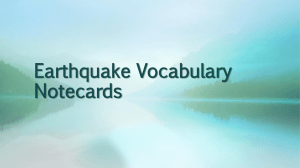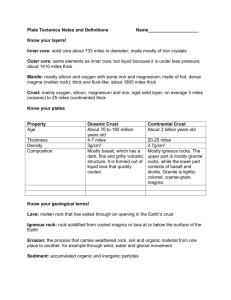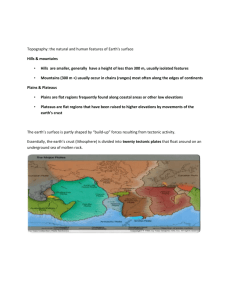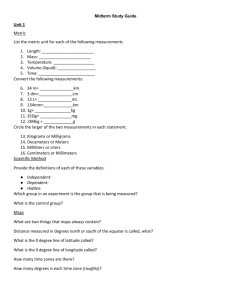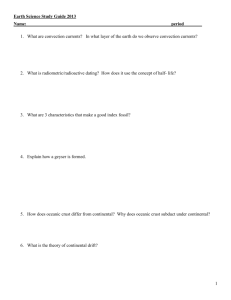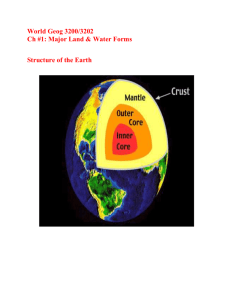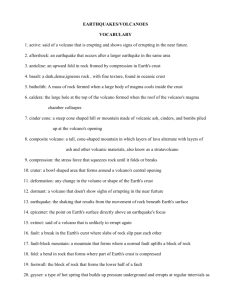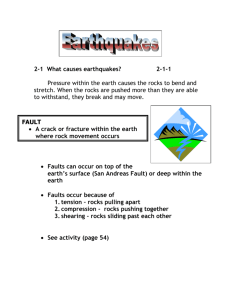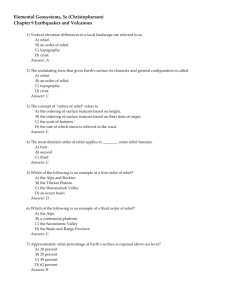Chp - ESDNLWelshman
advertisement
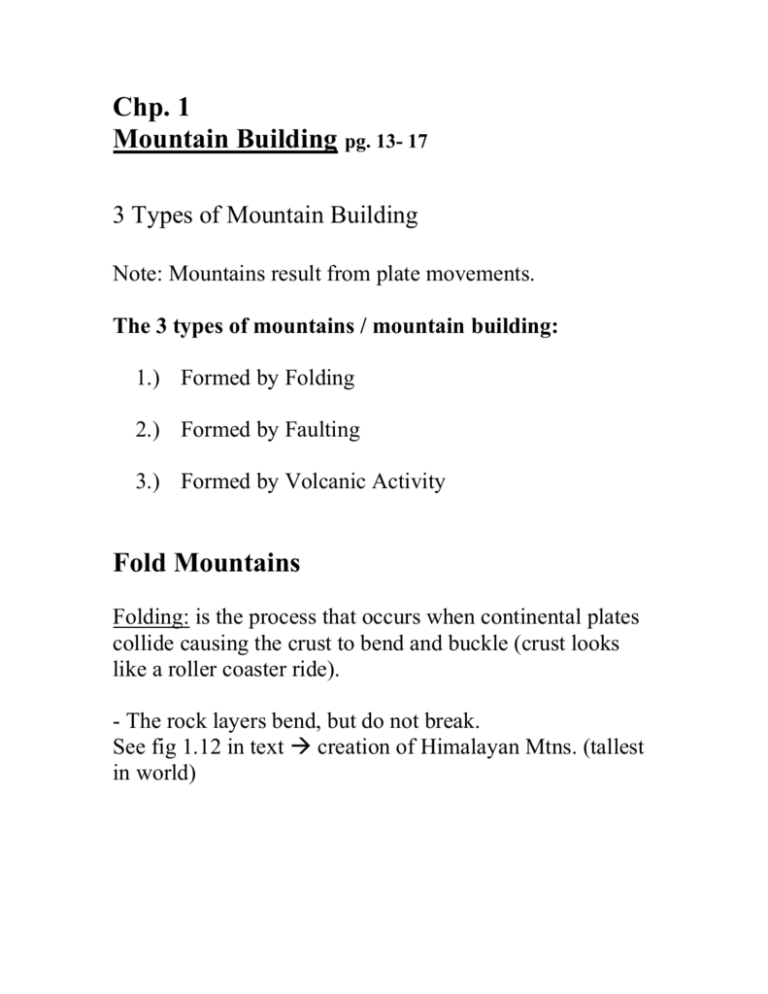
Chp. 1 Mountain Building pg. 13- 17 3 Types of Mountain Building Note: Mountains result from plate movements. The 3 types of mountains / mountain building: 1.) Formed by Folding 2.) Formed by Faulting 3.) Formed by Volcanic Activity Fold Mountains Folding: is the process that occurs when continental plates collide causing the crust to bend and buckle (crust looks like a roller coaster ride). - The rock layers bend, but do not break. See fig 1.12 in text creation of Himalayan Mtns. (tallest in world) Compressional forces are at work here. Anticline: the peak or top of a fold in the rock layers. Syncline: the trough or bottom part of the fold in the rock layers. Fault Mountains Faulting: is the process that occurs when the crust fractures or breaks apart. - Due to compressional and tensional forces. - Faults may be short or hundreds of kilometers long. Four types of faults: 1.) Normal 2.) Reverse 3.) Block 4.) Overthrust 1.) Normal Faults: Caused by tensional forces. When the land moves apart at a fault line one plate drops down lower than the other. The land that rises above can form a mountain. 2.) Reverse Faults: Caused by compressional forces when plates move together at the fault. The land that rises above can form a mountain. 3.) Overthrust fault: A fault that has already undergone “folding”. One set of rock layers has been pushed up and thrust over other rock layers. 4.) Block fault: Occurs when a piece of the earth’s crust is moved upwards between two parallel fault lines. ( Rift Valley occurs when a piece of the earth’s crust is moved downwards.) Fig. 1.13 in text. Volcanic Mountains Volcano: An opening in the Earth’s crust through which magma, gases, and ash erupt. Magma: Molten or melted rock found below Earth’s crust. When magma cools to a solid it forms igneous rocks. Lava: magma that flows at the Earth’s surface. Ash : Small pieces of lava that are blasted into the air during volcanic eruptions. Vent: The opening through which the volcanic material flows. Ash and Cinder Cone - The simplest type of volcano. - Symmetrical shape, steep sides, large crater. A single vent. - Very explosive. Lava is thick and slow flowing, often blocking the vent Boom! Shield Cone - Shape is broad and flat. - The volcano is built of lava, which nearly always flows from the vent. - Eruptions are milder / the least explosive. Composite Cone - Shape is similar to ash and cinder, except it is built of layers of ash, cinder, and lava. - A network of magma vents develop inside, forming mini-volcanoes. - Eruptions can be explosive, followed by periods of quiet activity. Complete Questions 14-16 pg. 16

